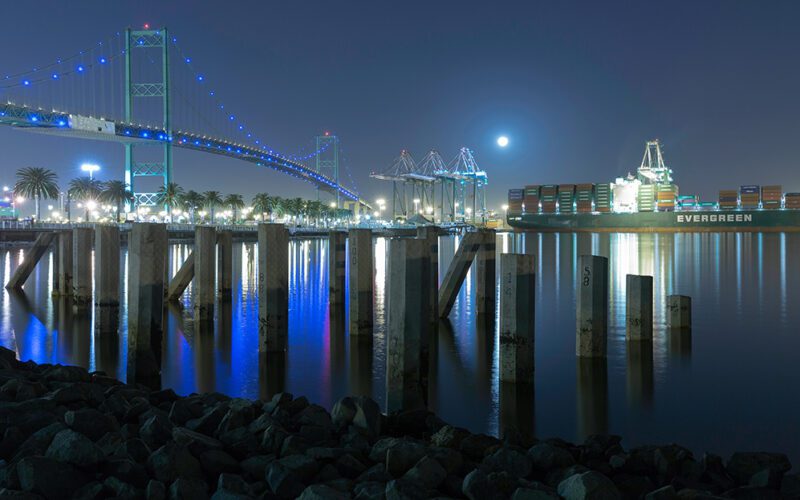
From an air quality and climate pollutant standpoint, the state of California has the cleanest ports in the U.S. The success of these ports’ clean air programs is a function of numerous factors. They include port policies, lease agreements, voluntary measures, regulations and an industry willingness to experiment with a variety of technologies, fuels and operational modifications.
Most port-related emission categories are now measured in fractions of a percentage point of total emission inventories – i.e., very small numbers. As an example, nitrogen oxide (NOx) emissions for marine terminal equipment operating in the South Coast Air Basin make up about 0.6% of the total emission inventory.
Recently, the San Pedro Bay ports released their 2022 air emission inventories. The combined numbers show significant reductions, with diesel particulate matter (DPM) down by 90%, 97% for sulfur oxides (SOx) and 63% for NOx, compared to the 2005 baseline year.
Reductions were captured across all port sources, including ocean-going vessels, cargo handling equipment and trucks. Laudably, the San Pedro Bay ports’ Clean Air Action Plan (CAAP) emission reduction targets have been met ahead of schedule. These measures, emission reduction targets and emission inventory reports are all done voluntarily, truly the model for ports around the nation.
Can anyone identify another industry sector that has achieved the immense amount of reduced emissions as effectively as California’s supply chain?
Further reductions certainly will continue as the supply chain continues to transition to more zero-emission technologies and fuels. Zero-emissions trucks and marine terminal equipment are being utilized or tested. Cleaner fuels and engine technology advancements for ocean-going vessels and locomotives are also underway.
Hydrogen and battery electric fuel cells, methanol, liquefied natural gas (LNG) and other alternative fuels and power sources are also on the horizon.
As indicated above, California’s ports are dynamic and rapidly changing centers of innovation; it is anything but a static situation. The supply chain is pushing the boundaries of technology.
In fact, technological advancements are outpacing California’s ability to provide the vital supporting infrastructure—a challenge for policymakers, utilities and land-use planners, much less end users.
For future success, ports will need to balance what is achievable, not just from a tailpipe standpoint, but in the ability to fund supporting infrastructure, streamline a burdensome permitting process that is currently measured in years or decades and set requirements for equipment manufacturers and utilities.
What good is an electric or hydrogen vehicle if a charging or fueling unit cannot be found?
Emissions goals must be balanced with the realities of a competitive marketplace, impacts on jobs and the ability to view multi-faceted challenges in their entirety, not in isolation. Cost impacts must be counterbalanced by public-policy objectives that maintain California’s future competitiveness, whether at the ports, manufacturing plants or farms.
Policymakers cannot turn a blind eye to the practical impacts of aspirational goals; rather, the situation must be viewed holistically. Otherwise, we are left with policy deadlines that are function of exception, exemption and extension, going beyond limited political horizons.
The end result is that we are left with headlines rather than achievements—something we should all seek to avoid.
John McLaurin is president of the Pacific Merchant Shipping Association, an Oakland, Calif-based independent, not-for-profit association focused on global trade.

